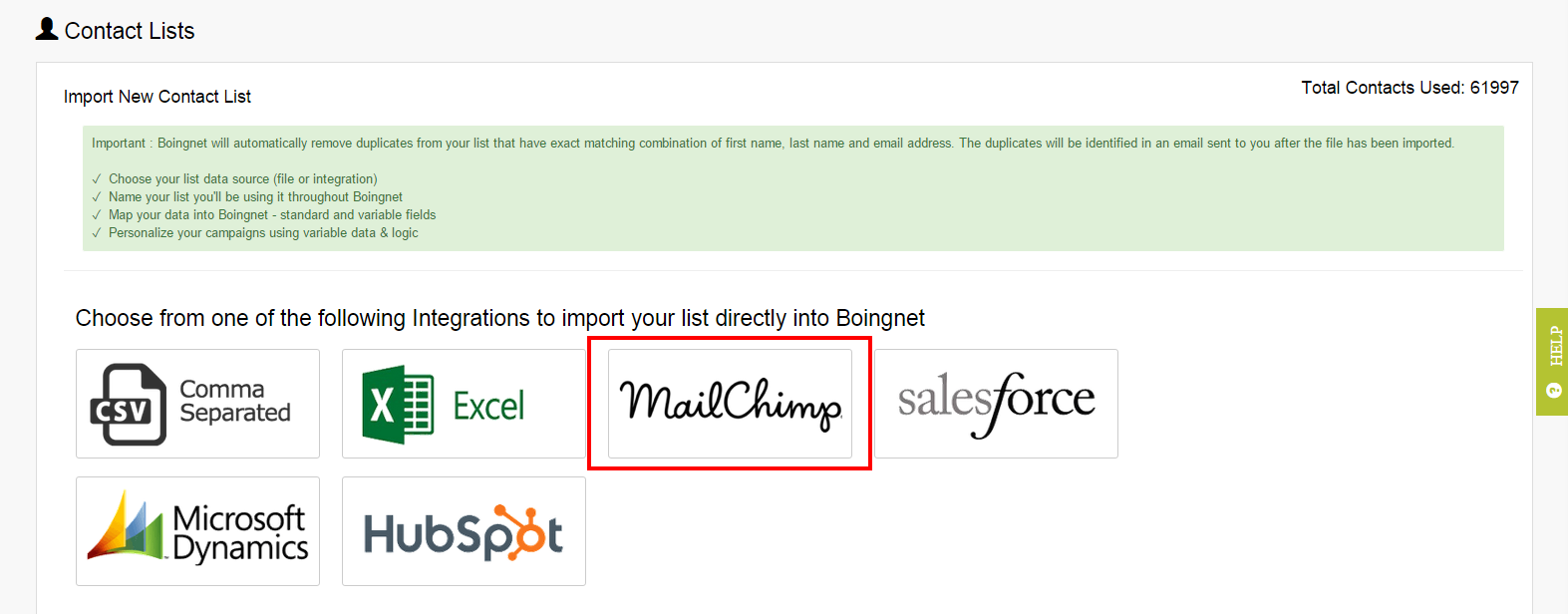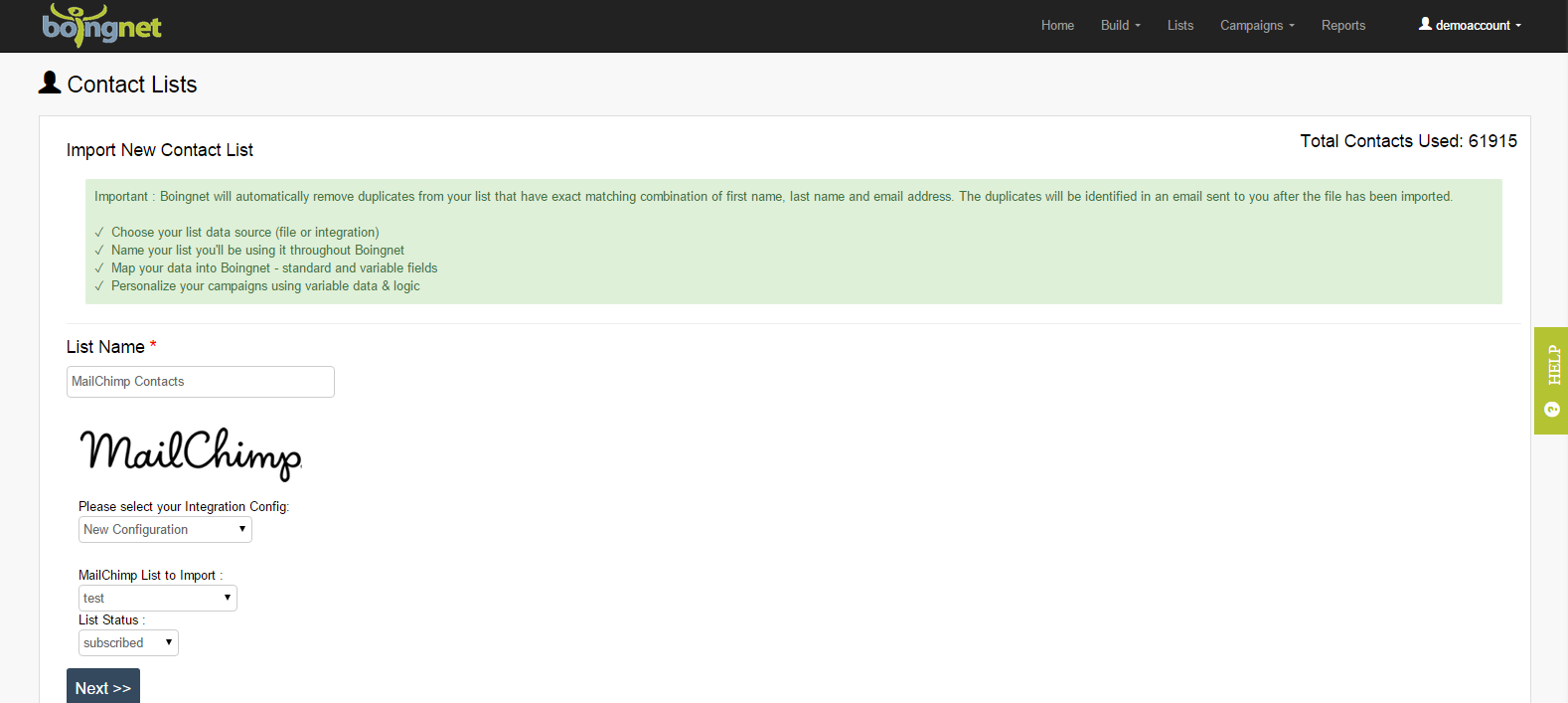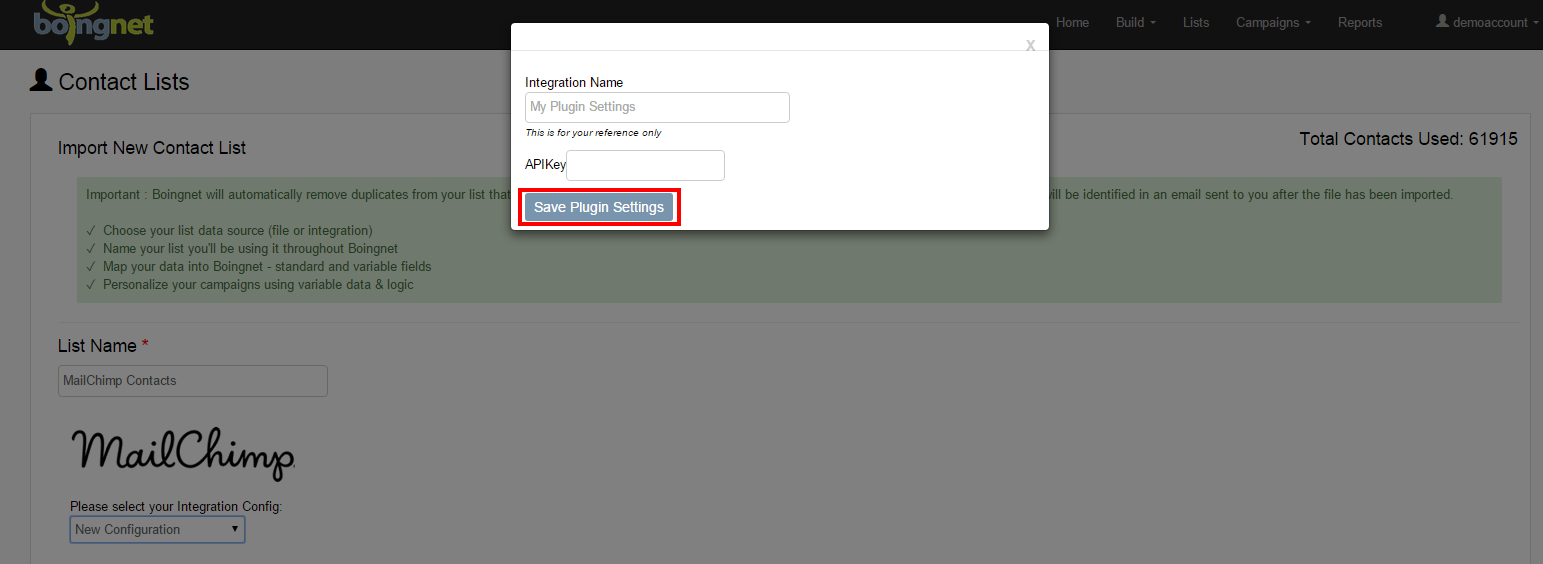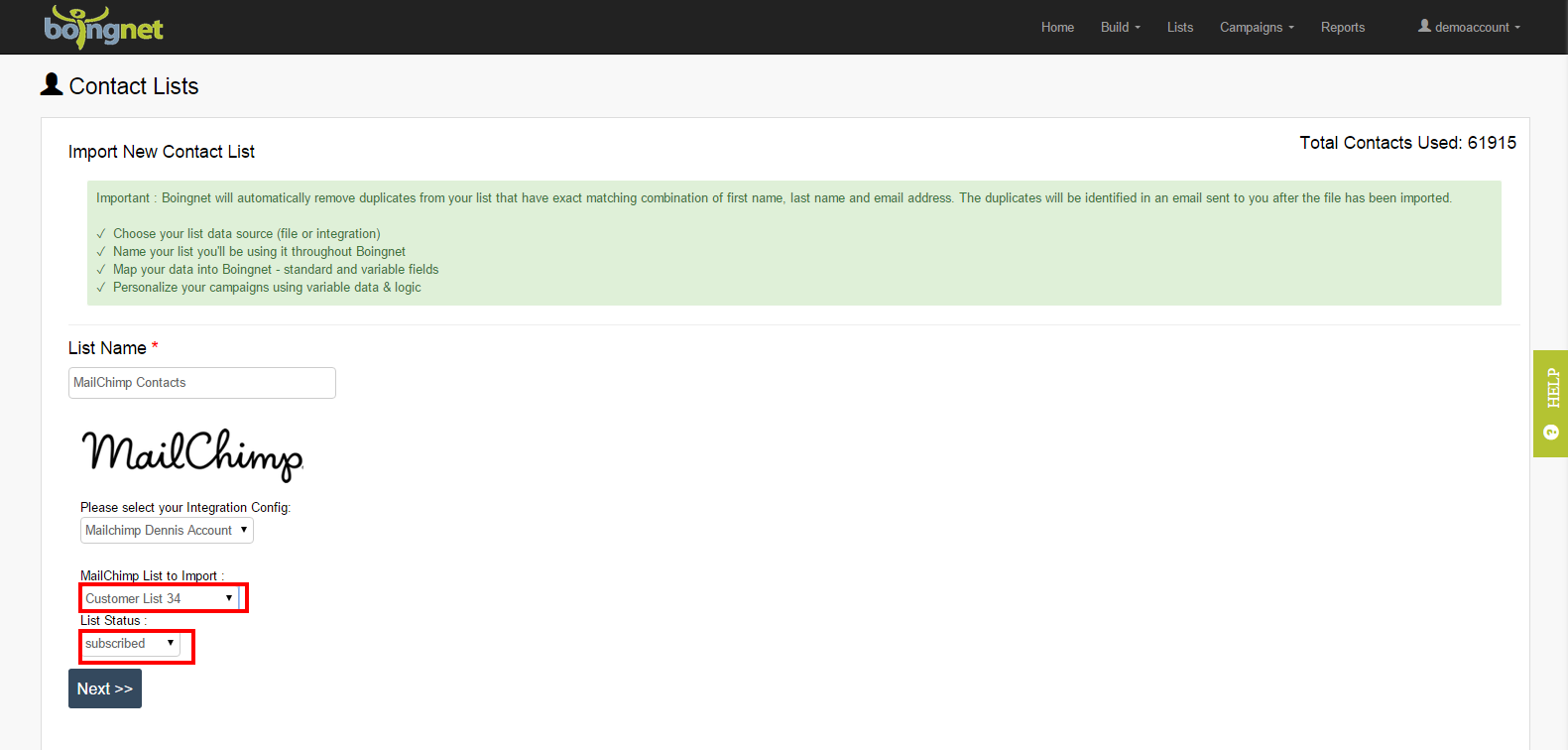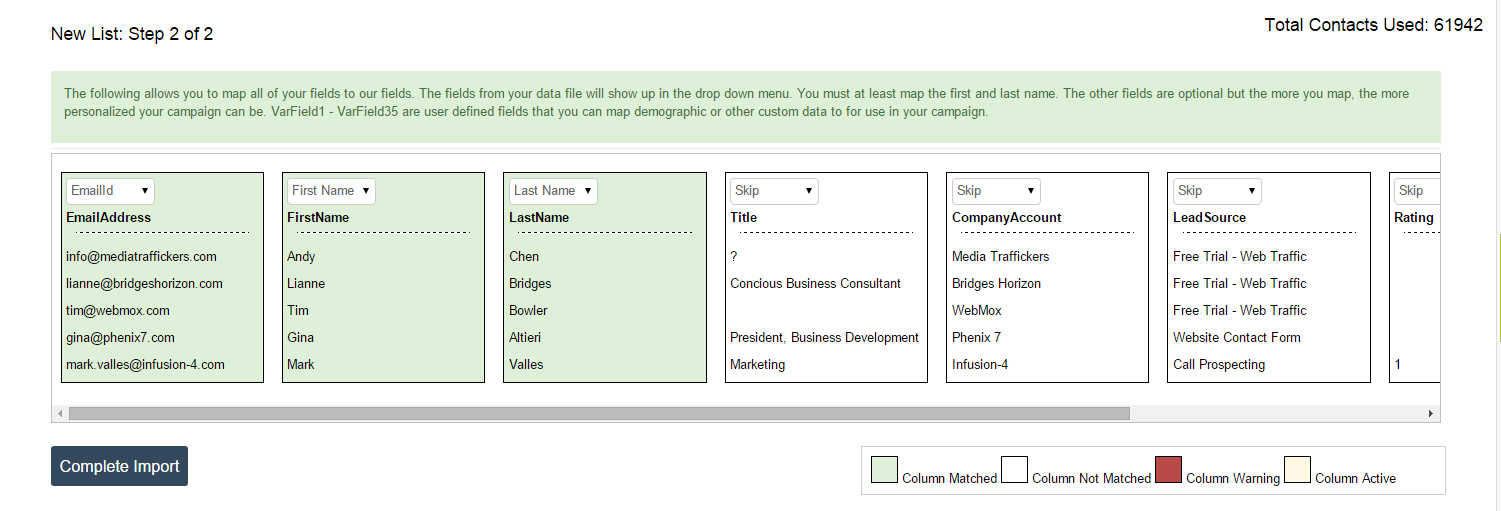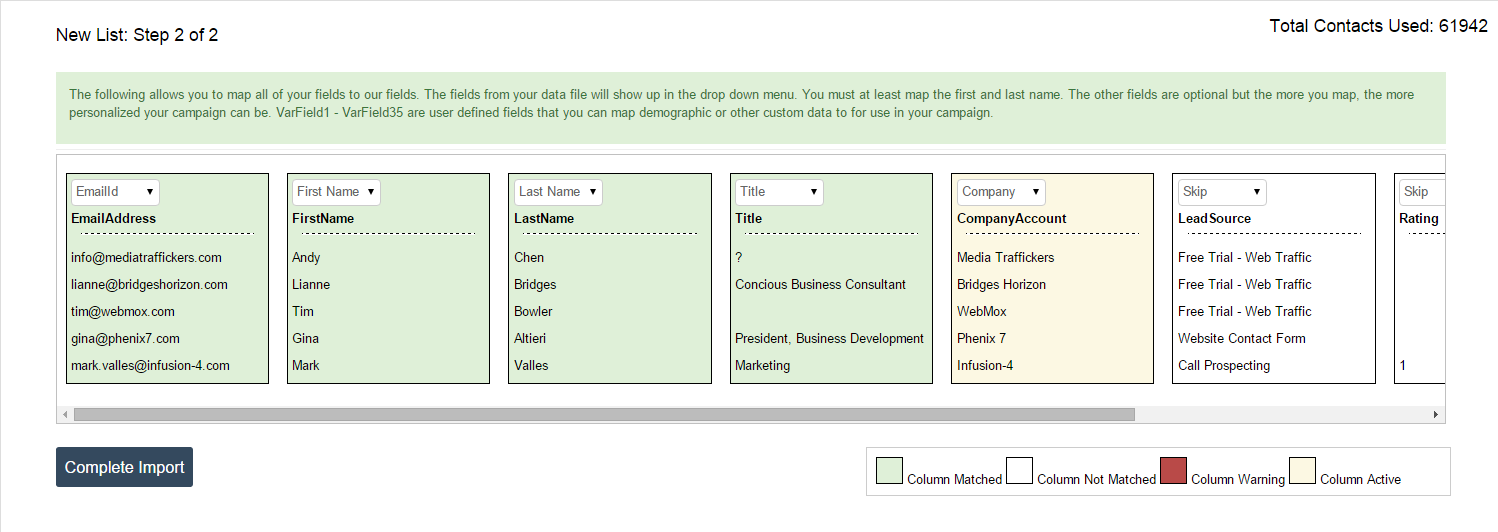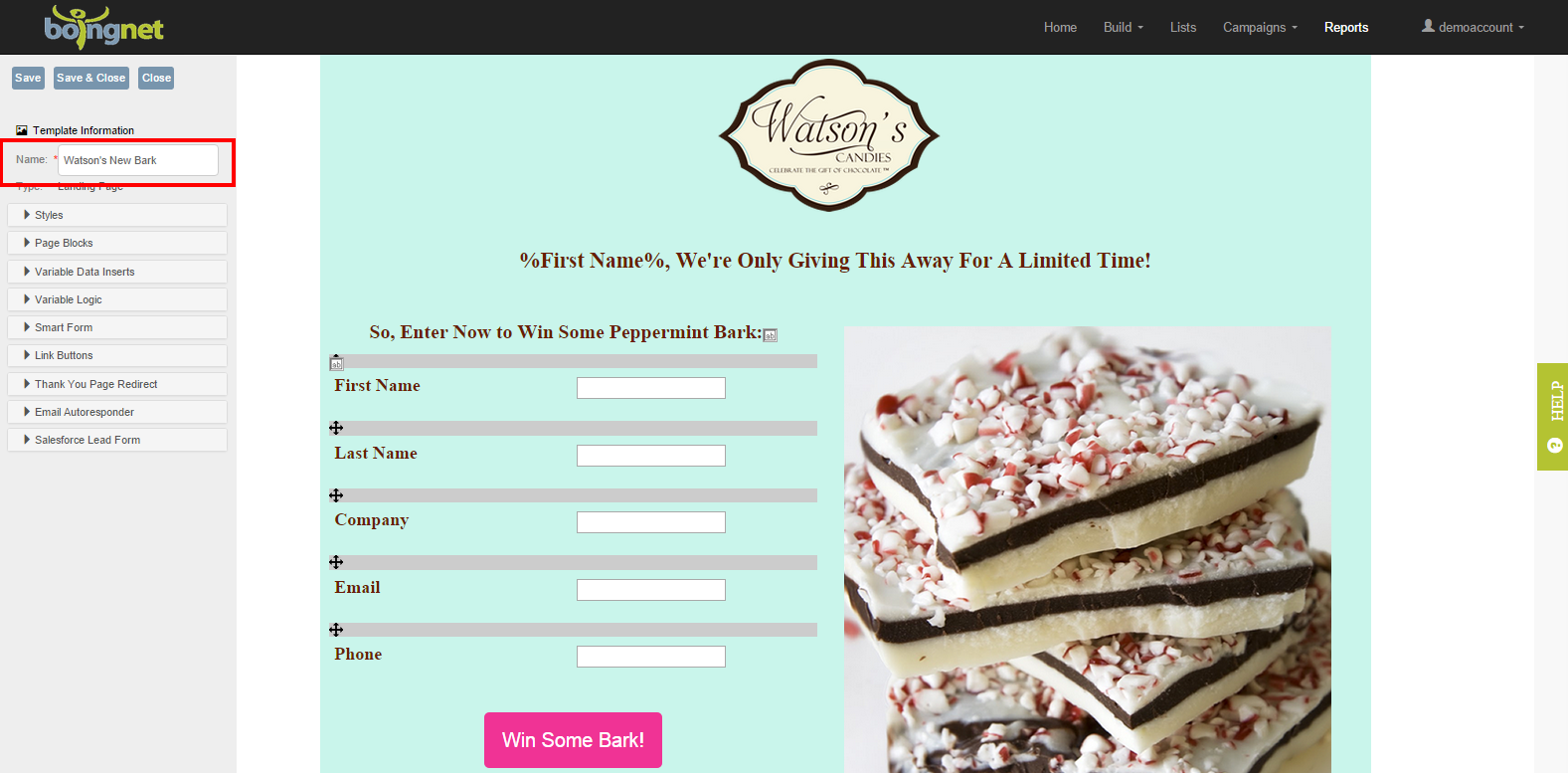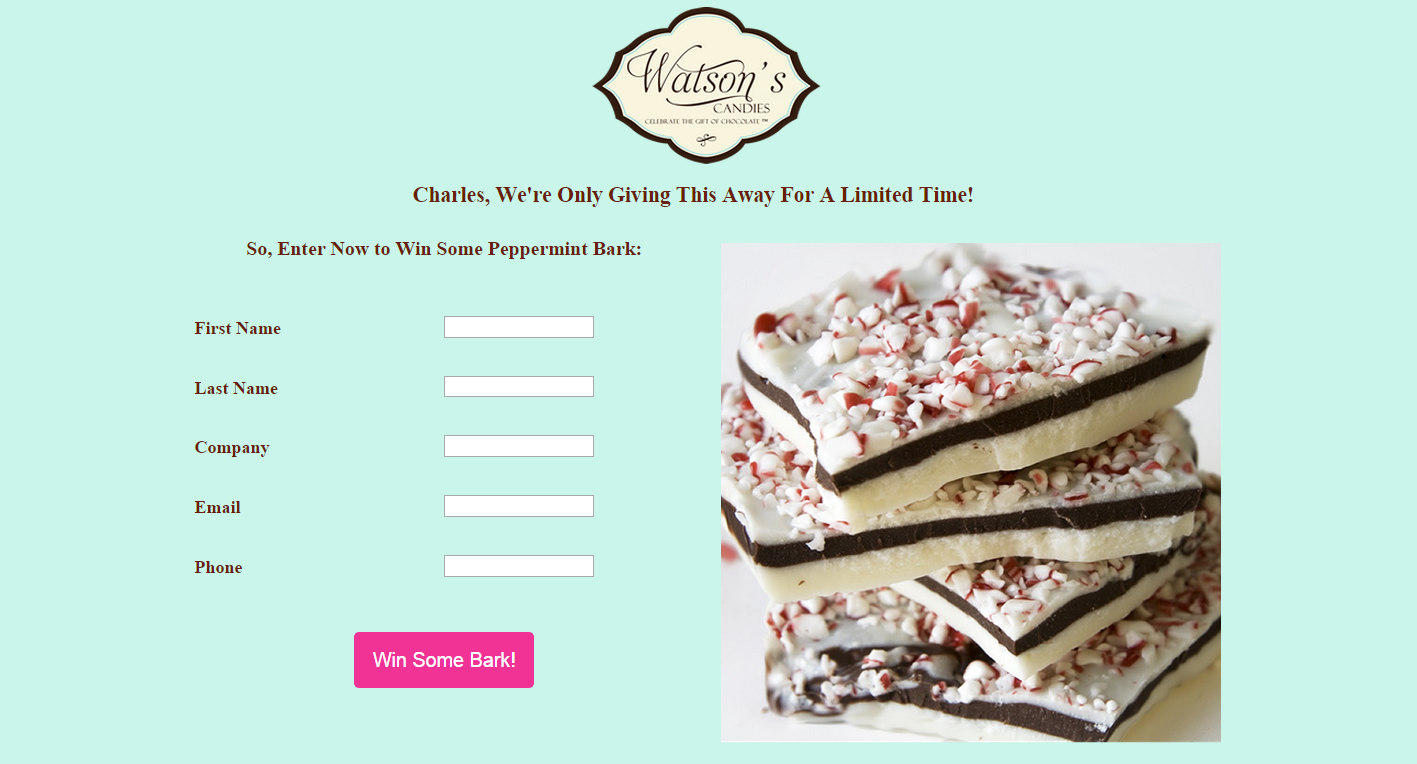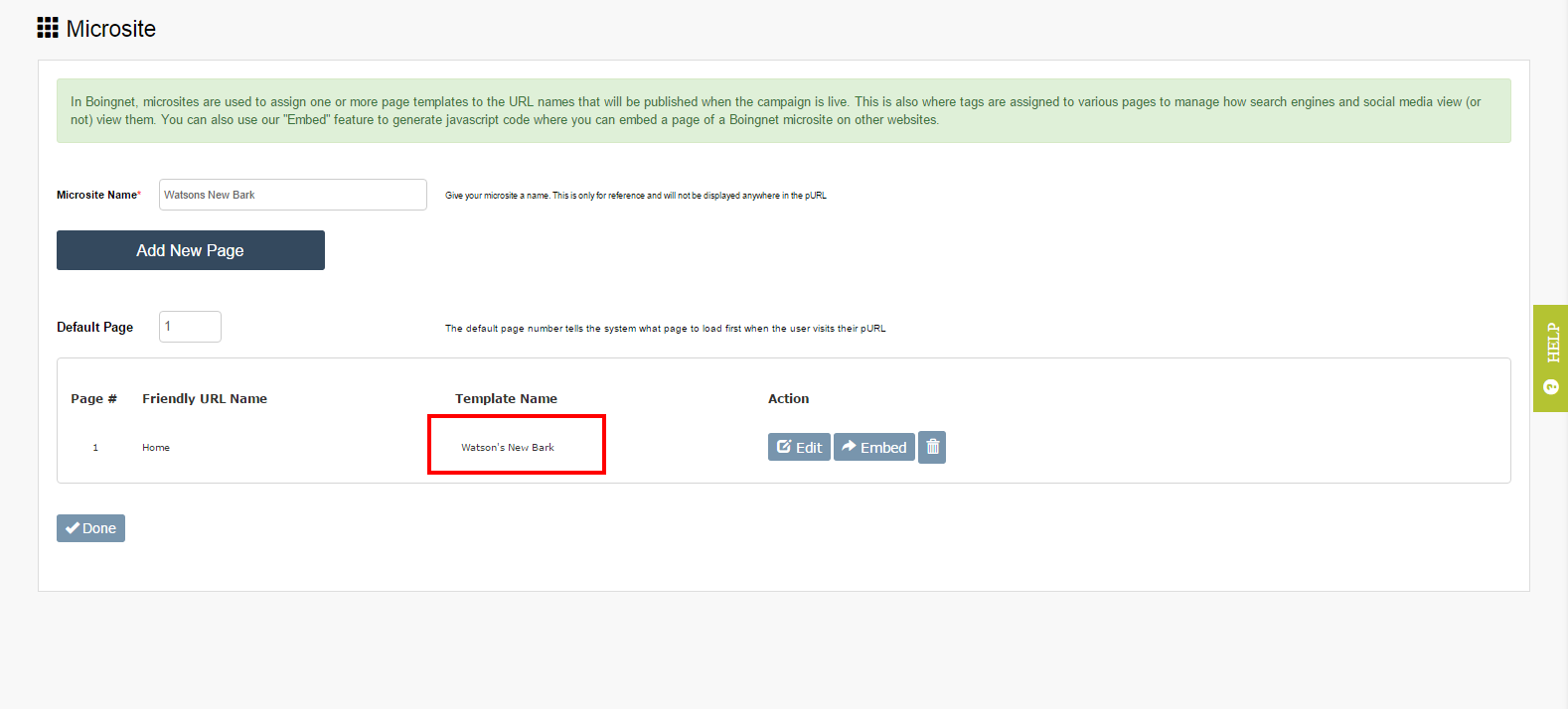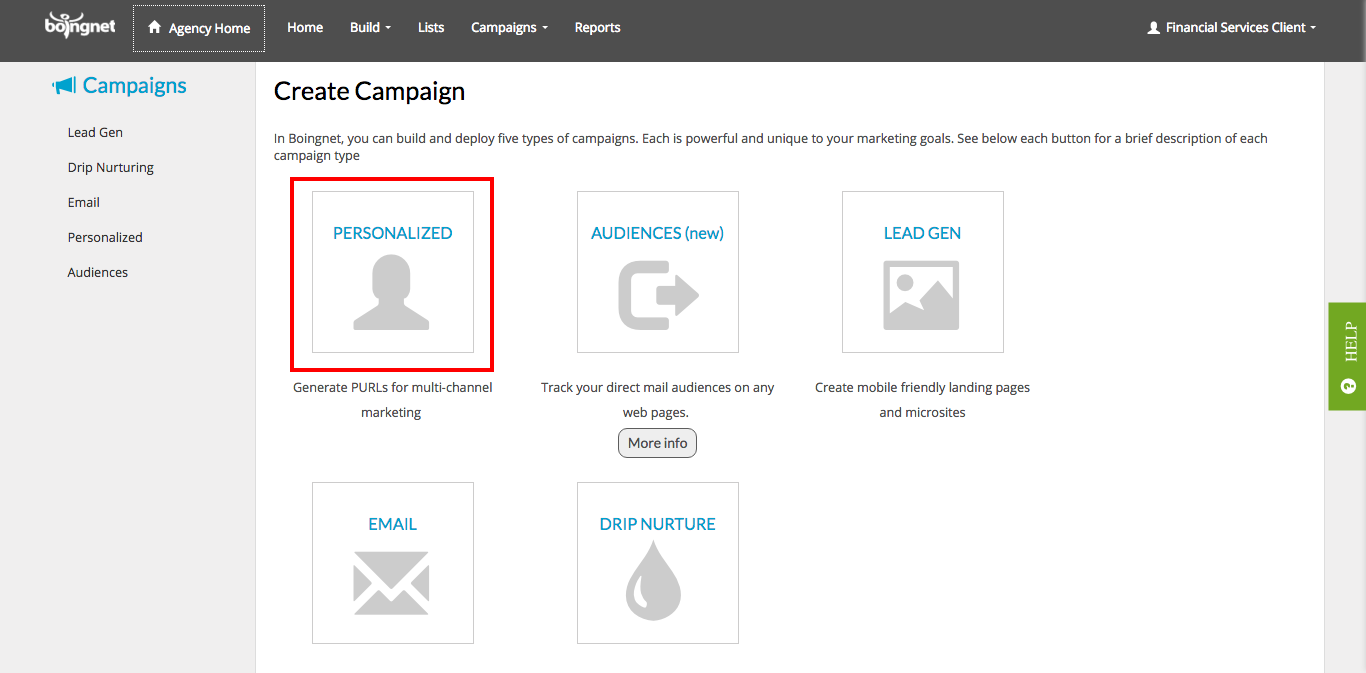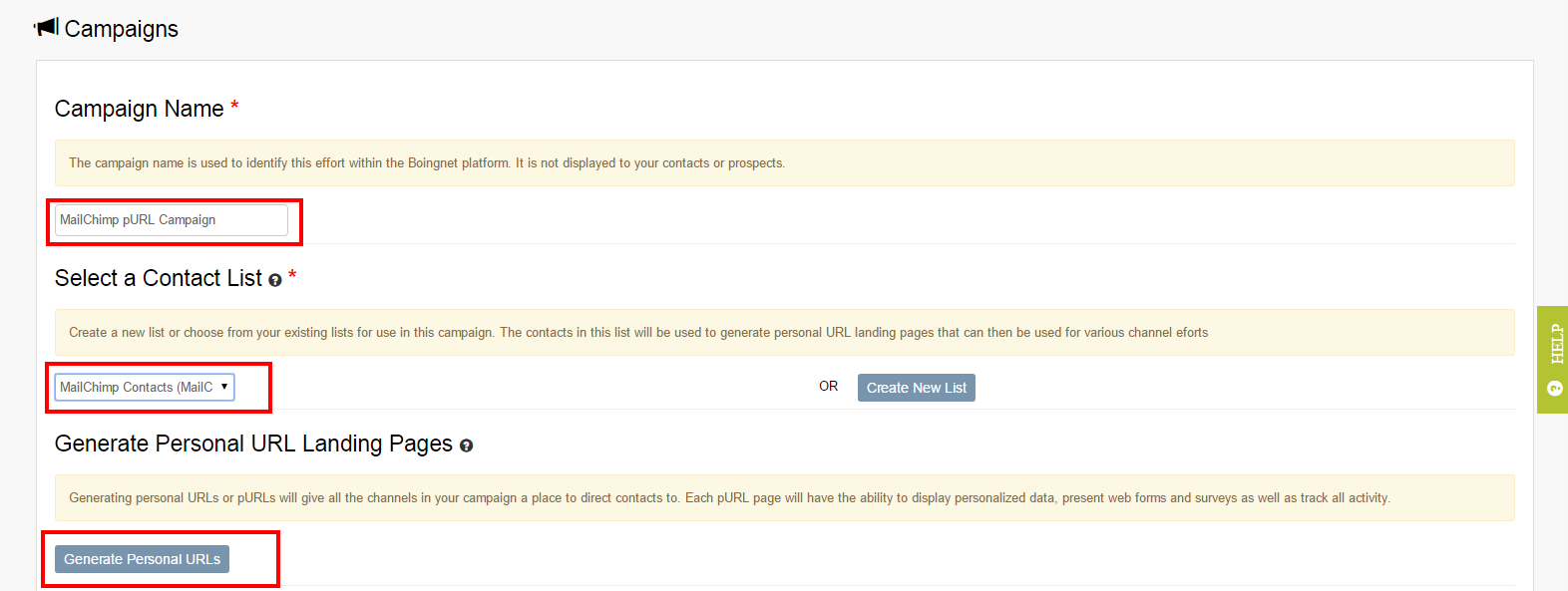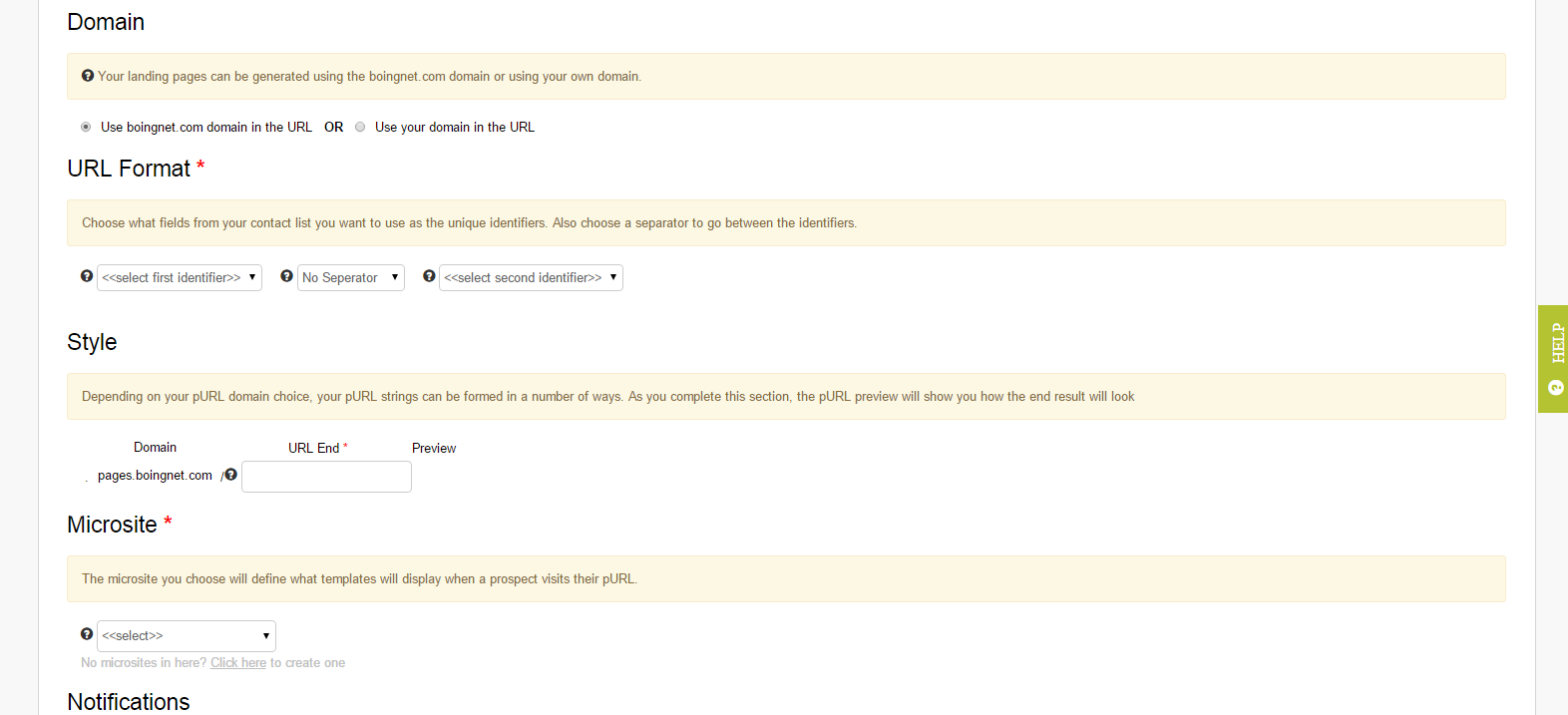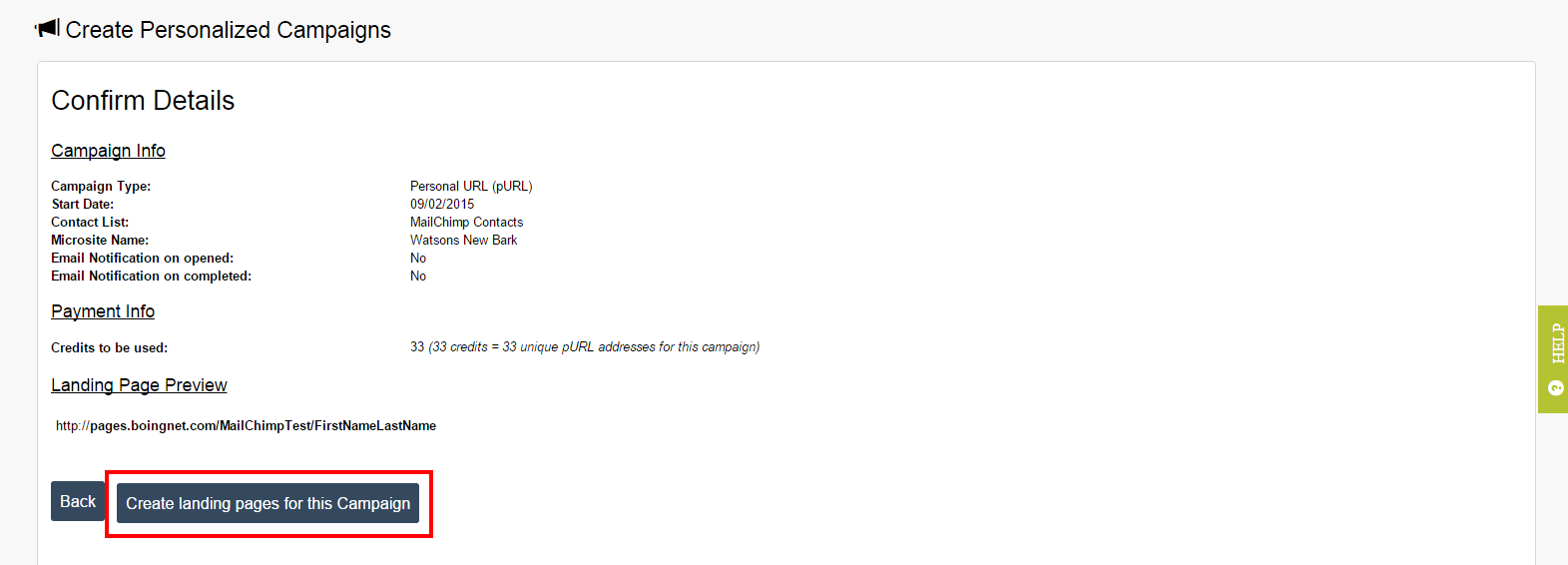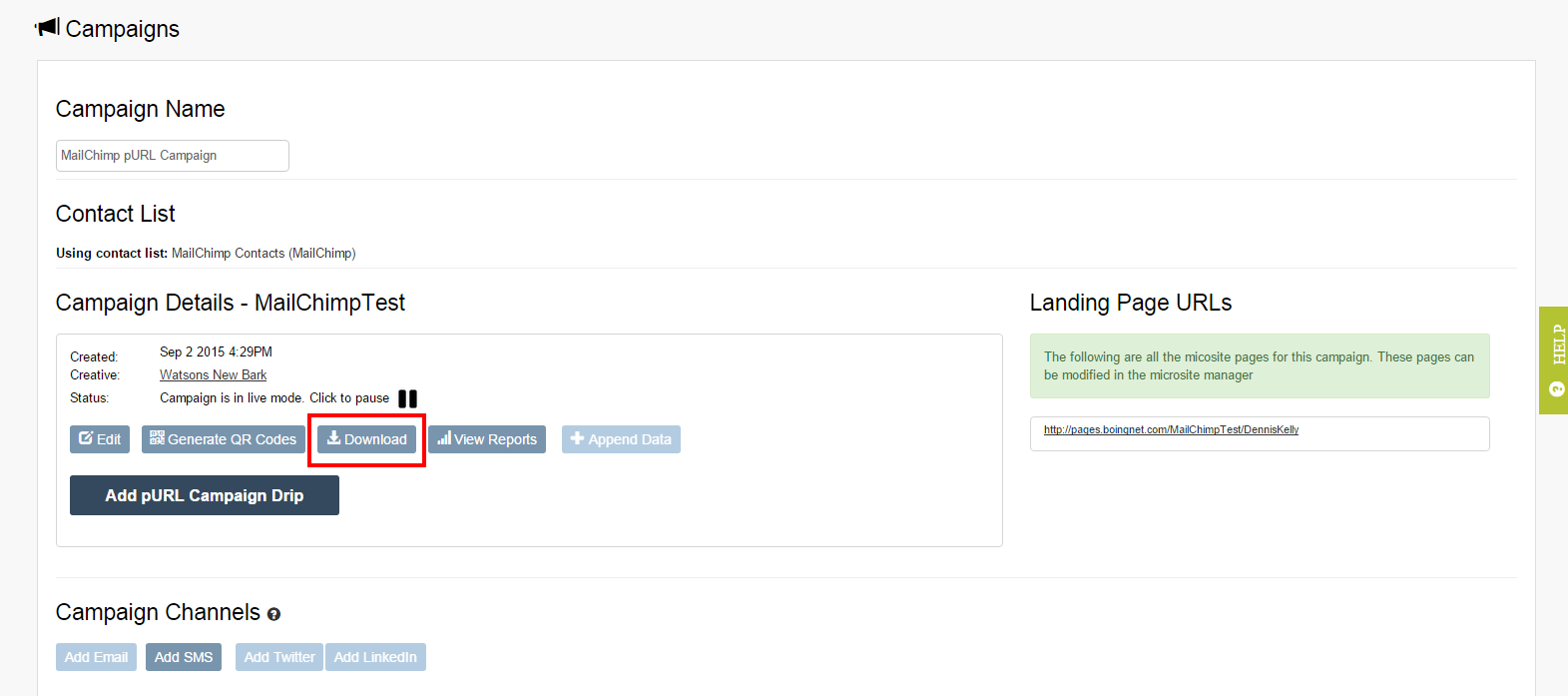You’ve been using MailChimp to send your email blasts for years and now you have a solid list of contacts. You’ve also thought about reaching out to this list using channels other than email – channels such as pURLs, or personalized landing pages and direct mail – because you’d like to maximize your interaction with these contacts. Now that Boingnet is integrated with MailChimp, you can easily use our pURLs with direct mail to give your marketing message more real traction by reinforcing it across more than one channel.
To generate pURLs or Personalized URLs with a contact list imported from your MailChimp account, just follow the 5 steps outlined below and you’ll create a unique pURL for each person on the list you import:
- Import your Contacts from your MailChimp Account.
- Create a Landing Page template for your pURLs.
- Create a Microsite for your pURL campaign.
- Create your pURL campaign.
- Download your pURLs for your direct mail piece.
To Import Contacts from Your MailChimp Account:
First, obtain an API Key from your MailChimp account. This API Key will allow you to import your MailChimp lists into your Boingnet Account. If you already have your API Key, skip to Import a List from MailChimp:
To get an API Key, login to your MailChimp account and click your profile name to expand the Account Panel and then choose Account:
Click the Extras tab and choose API Keys:
Click the Create a Key button:
In a new tab, login to your Boingnet Account.
Step 1: Import a List from MailChimp:
- From the Home Page, or main navigation bar, click Lists to go to the Contact Lists Page.
- Click on Create New Contact List in the upper right corner. You’ll navigate to the following page:
Click on the MailChimp button:
Under List Name, enter a name for your Contact List. In the example above, we’ve used MailChimp Contacts.
If this is your first time setting up a plugin for MailChimp, Select New Configuration under Please select your Integration Config:
A pop-up box will appear to create a new plugin:
- Enter an Integration Name.
- Copy the API Key that you just obtained from your MailChimp account above.
- Click Save Plugin Settings.
If you already have a MailChimp plugin setup, then select it from the drop down list:
Next,
- Select the MailChimp List to import from the drop-down list.
- Under List Status, choose the status of the records on your MailChimp List to import:
- Subscribed OR
- Unsubscribed OR
- Cleaned
In the example below, we’ve selected all records from Customer List 34 with a subscribed status:
Click Next to continue to the Mapping Page.
The Mapping Page will allow you to map all of the data from your MailChimp list to the list that Boingnet will create. You will see all the fields from your input file appear in the drop-down menus:
Boingnet will attempt to match your MailChimp fields with fields on your Boingnet Contact List. Fields highlighted in green have already been mapped for you. In the example above, Email, First Name, and Last Name have been mapped.
Fields shown in white – such as Title and Company Account have not yet been mapped. You may map these fields to a Boingnet field by clicking on the drop-down menu and selecting a field. In the example below, we’ve mapped Company Account to Company by selecting Company from the drop-down menu:
Continue to map your other fields – remember that the more fields you map, the more personalized your campaigns using this list can become. If you’ll be using this list to send email or SMS messages, make sure you map email address and mobile phone.
If the drop-down list that appears underneath a given field doesn’t contain a similar field to map to, then choose one of our Variable Data Fields instead. For example, if your input file contains a field for Gender, you may map that to one of the Variable Data Fields that appears at the bottom of the menu.
You can also choose to ‘skip’ mapping a certain field by selecting Skip from the drop-down list that appears above that field. If you select Skip, this data will NOT be mapped to your list. Remember, there is no way to re-map a contact list once it has been uploaded to Boingnet. We recommend that you map all of your input file data by selecting from one of the 35 Variable Data Fields.
During the mapping process, you can not map more than one field to a Boingnet field. For example, if your input file contains 2 email addresses, you must map those email fields to two different Boingnet fields – email id and variable data 1 for example. Boingnet will let you know if you map the same field twice by showing you a red error message.
After mapping all of your fields, click on Complete Import.
Your data will be imported into Boingnet. Depending on the size of your file, this process may take a few minutes. You will receive an email confirmation when your list has successfully uploaded. You can click Go to Contact Lists Now to check the status of your list.
2. Create a Landing Page Template for Your pURLs:
Now that you’ve imported your contacts from MailChimp, the next step is to create a landing page template for the pURLs you generate. Once you have your landing page template created, you can easily copy and modify it for future campaigns. Your Personalized Campaign will use your template:
To create a landing page for each person on your contact list:
For more information on how to build your landing page template, visit How to Build a Landing Page.
3. Create a Microsite for your pURL campaign:
All Boingnet campaigns that use landing pages require a microsite. Your microsite will link the landing page template you create in step 2 with the domain you’ll use for your campaign:
For more information, visit our page on How to Create a Microsite.
4. Create Your pURL or Personalized Campaign:
Once you have imported your list and created your landing page template and microsite, you can create a Personalized Campaign to generate your pURLs.
From the main navigation bar, click on Campaigns and then select Create New Campaigns. On the next page, select the Personalized option:
Next, click on Create Personalized Campaign and you’ll navigate to the following page:
- Under Campaign Name, enter a name to identify this campaign.
- Select the Contact List you imported from MailChimp from the drop-down menu. In this example, we’ve selected the MailChimp Contacts list created in Step 1.
- Click Generated Personal URLs.
You’ll navigate to the page below where you can define the structure of your pURLs:
Domain:
Underneath Domain – Choose either the Boingnet sub-domain or your own domain. If you select the Boingnet.com domain, your pURLs will have the following structure:
http://pages.boingnet.com/URLEnd/FirstNameLastName
If you select your own domain, your pURLs will have this structure:
http://FirstNameLastName.yourdomain.com/URLEnd
Please note: If you choose to use your own domain, you’ll need to point that domain to Boingnet’s IP address so we can host your landing pages. For step by step instructions, visit our page How to Point Your Domain to Boingnet.
URL Format:
- Choose a first identifier – typically First Name – from the drop-down menu.
- Choose a separator from the second menu.
- Choose a second identifier – typically Last Name – from the third drop-down menu.
Style:
It’s a good idea to define a unique URL End for this campaign so you can tell this campaign’s pURLs from another campaign’s. This is especially important if you plan to use this list and this domain again for future campaigns.
Microsite:
Select the microsite you created in Step 3 from the drop down menu.
Notifications:
You can have an email notification sent to this campaign’s administrator each time a person visits a pURL and /or completes the form on a pURL. If you’d like these notifications, check the appropriate boxes.
Click the Next button on the bottom, you’ll navigate to the confirmation page:
Click Create landing pages for this Campaign and your campaign’s pURLs will be generated. Depending on the size of your list, this process may take several minutes. When done, you’ll navigate to the Campaign Edit page:
To download your campaign pURLs into a file for your printer, click Download. This file will contain each individual’s basic contact information from your MailChimp input file, plus the pURL created by Boingnet.
Contact Our Support Forums for Help
We are perpetually seeking to evolve our product as well as our support process. If you didn't find your answer here take a moment to visit our support forums as well as submit your ideas on how we can bring Boingnet to the next level!
Support Forums




